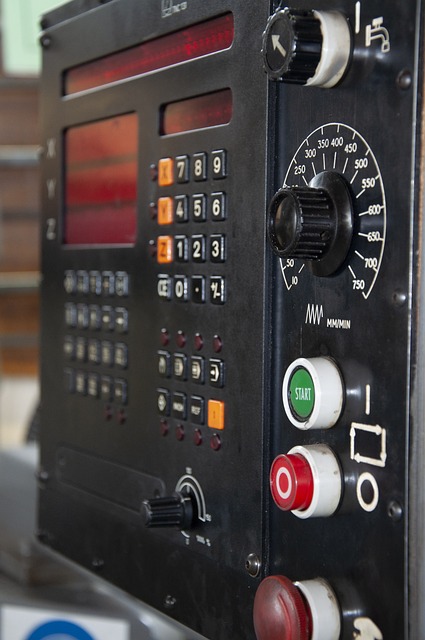The Rise of Automated Trading Bots: Revolutionizing the Financial Markets
In recent years, there has been a significant shift in how trading is conducted in financial markets. With the emergence of technology, automated trading bots have become increasingly prevalent. These sophisticated algorithms are designed to make real-time trading decisions on behalf of investors, offering numerous advantages while also posing certain risks. This article will explore the world of automated trading bots, delving into their functions, advantages and disadvantages, and what the future may hold for this technology.

Understanding Automated Trading Bots
Automated trading bots, also known as algorithmic trading systems, are software programs that utilize complex algorithms to execute trades in the financial markets. By analyzing market data, these bots make informed trading decisions faster than humans ever could. They can operate in various markets, including stocks, commodities, forex, and cryptocurrencies. As technology continues to evolve, these bots are becoming increasingly sophisticated, offering features such as machine learning capabilities and natural language processing.
How Do Automated Trading Bots Work?
Automated trading bots function based on a set of predefined rules and strategies. Here are the essential elements involved in their operation:
- Market Analysis: The bots continuously collect and analyze market data using technical indicators, price charts, and historical data. This deep analysis allows them to identify patterns and trends.
- Execution of Trades: Once the bot identifies a trading opportunity, it can automatically execute trades based on the predefined criteria set by the user.
- Risk Management: Many trading bots come equipped with risk management features that help minimize losses. These can include stop-loss orders, take-profit levels, and diversification strategies.
Advantages of Using Automated Trading Bots
The adoption of automated trading bots offers several advantages to investors and traders. Here are some key benefits:
1. Speed and Efficiency
In the fast-paced world of trading, speed is crucial. Automated trading bots can analyze market data and execute trades within milliseconds, a feat unattainable for human traders. This speed enables traders to capitalize on favorable market conditions and minimizes the risk of losing out due to delays.
2. Emotional Detachment
One of the significant advantages of using trading bots is their ability to operate without human emotions. Emotional trading can lead to impulsive decisions, which can result in substantial losses. Bots adhere strictly to their algorithms, executing trades based on data rather than fear or greed.
3. 24/7 Trading Capability
Automated trading bots can operate continuously, even when the trader is asleep. This 24/7 functionality is particularly beneficial in global markets, where trading occurs around the clock. Traders can take advantage of opportunities in different time zones without needing to monitor the markets constantly.
4. Backtesting and Strategy Optimization
Traders can use historical data to backtest their trading strategies, allowing them to refine and optimize their approaches. This capability helps traders identify which strategies are likely to succeed before executing real trades with real money.
Disadvantages of Automated Trading Bots
Despite their numerous advantages, automated trading bots are not without their drawbacks. Here are some of the potential risks involved:
1. Technical Failures
Automated trading systems rely heavily on technology. As such, they are susceptible to malfunctions, connectivity issues, and software bugs. Any technical failure during a critical trading moment could lead to significant financial losses.
2. Over-Optimization
While backtesting is a valuable feature, it can also lead to over-optimization. This occurs when a strategy is fine-tuned too much based on historical performance, making it less effective in real-time trading conditions. Traders must strike a balance between optimizing their strategies and ensuring they remain adaptable to market changes.
3. Market Conditions Can Change
Automated trading bots operate based on historical data and predefined algorithms. However, market conditions can change unexpectedly, rendering a trading strategy ineffective. Bots may fail to adapt to new trends, leading to potential losses.
4. Regulatory Concerns
As automated trading becomes more mainstream, regulatory bodies are starting to scrutinize these practices. Traders must remain aware of the changing legal landscape concerning trading algorithms to avoid potential penalties or restrictions.

Choosing the Right Automated Trading Bot
For those considering utilizing an automated trading bot, it’s essential to choose the right solution that aligns with your trading goals. Here are some factors to consider when selecting a trading bot:
1. Reputation and Reviews
Before committing to a specific trading bot, research its reputation within the trading community. Online reviews, user testimonials, and professional assessments can provide valuable insight into its performance and reliability.
2. Features and Customization
Different trading bots come with varying features. Consider what functionalities are essential for your trading strategy. Look for options that offer customization, enabling you to tailor the bot to suit your specific needs.
3. Cost and Fees
When selecting a trading bot, evaluate the costs involved. Some bots charge a one-time fee, while others operate on a subscription basis or take a percentage of profits. Understanding the fee structure can help you make informed decisions.
4. Customer Support
Reliable customer support is crucial, especially when dealing with automated trading systems. Ensure that the provider offers responsive customer service to address any queries or issues you may encounter.
The Future of Automated Trading Bots
As technology continues to advance, the future of automated trading bots looks promising. Here are some trends that may shape their development:
1. Artificial Intelligence and Machine Learning
The integration of artificial intelligence (AI) and machine learning into trading bots will enhance their capabilities significantly. These technologies can enable bots to learn from past trades, adapt to new market conditions, and make smarter decisions over time.
2. Increased Regulation
With the growing popularity of automated trading, regulatory authorities are likely to impose more stringent guidelines. This will help ensure fair trading practices, prevent market manipulation, and protect investors. Staying informed about these changes will be vital for traders using automated bots.
3. The Rise of Decentralized Trading Bots
As the cryptocurrency market evolves, decentralized trading bots are gaining traction. These bots operate on blockchain technology, enhancing transparency and security in trading practices. This trend may continue to grow as investors look for alternatives to traditional centralized exchanges.
Final Thoughts
Automated trading bots are undeniably changing the landscape of trading in financial markets. They offer unparalleled speed, efficiency, and the ability to execute trades around the clock. However, they are not a one-size-fits-all solution, and potential users must weigh their advantages and risks carefully.
In my opinion, the future of trading will largely revolve around the integration of automation and artificial intelligence. As investors continue to seek innovative solutions to enhance their trading strategies, automated trading bots represent a compelling option. However, individuals must approach this technology with caution, understanding that no trading solution is foolproof.
As the industry continues to mature, investors and traders who wish to leverage the capabilities of automated trading bots will need to remain informed, adaptable, and vigilant in their trading practices to navigate the complexities of the modern financial landscape successfully.